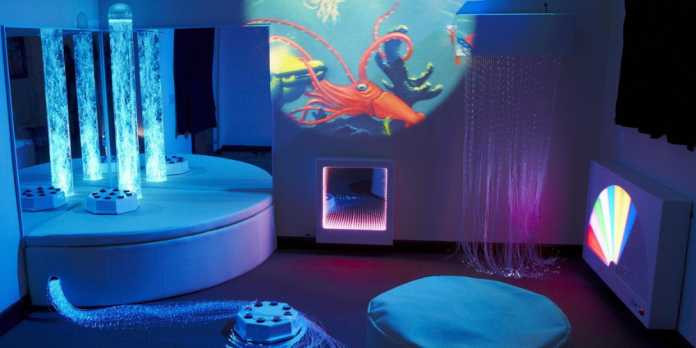Development in children makes them rely on getting sensory experiences that help them learn and make sense of the world around them. The use of sensory furniture is one way to incorporate sensory details and ventures into the classrooms. These provide children with a stimulating experience that engages them in the environment and make them rely on all of their senses to better understand the world around them.
Here we will learn how sensory furniture assists young children and help childhood education. We will also learn about the benefits of using the sensory table in the early years of a child’s education.
What is Sensory Furniture?
A range of furniture designed specifically to provide children with different sensory experiences is called a piece of sensory furniture. The table stimulates the sense of sight, touch, sound, and movement in different directions to create a multi-sensory learning experience.
You can find a wide variety of sensory furniture through renowned preschool furniture suppliers. The most common of all include the use of tactile walls, which promotes the sense of touch. The use of sensory chairs and tables is one of the most impressive uses of adding the benefits of sensory furniture to the early years of learning in children’s education.
Benefits of Sensory Furniture in Early Childhood Education
1. Enhances Learning Experience
If you want children to develop an immersive learning experience, using sensory furniture to promote the hands-on experience is wise. Such knowledge uses critical thinking abilities among children and encourages them to do problem-solving and increase their decision-making skills.
Children are encouraged to use their senses to explore and understand new concepts that lead to a deeper understanding of the subject.
2. Supports Developmental Skills
A child needs to learn motor skills; these skills improve his mind-body coordination and increase sensory detailing capabilities.
For instance, using a sensory table with sand or water helps children practice pouring or scooping a fixed quantity from one place to another. Using such sensory skills increases the ability to manipulate actions while using sensory chairs helps improve children’s balance, coordination, and posture.
3. Promotes Social Interaction
Building teamwork and collaborations are necessary for younger mind that is still developing fine motor skills as well. The children can use sensory furniture to make the essential collaboration technique and work in groups.
For instance, in a sensory scavenger hunt or collaborative art project, children work in groups to sense the needs and make a team work by using their stimuli in response to sensory furniture. They achieve a common goal, share their ideas with the team, and increase communication skills.
4. Provides Calming Effects
Many children can feel more overwhelmed or overstimulated than others while doing a similar task or project. The use of sensory furniture provides them with a calming effect. Using a sensory chair that allows for rocking or bouncing helps a child release energy and improve concentration and focus.
The tactile walls and sensory boards also provide a calming experience to help in reducing anxiety and stress in overhyped children.
5. Encourages Creativity and Imagination
Using sort of materials can spark creativity and improve imagination in younger minds. Sensory tables with multiple materials like playdough, rice, water, or sand can create a sense of satisfying experience and help spark creativity and encourage problem-solving abilities among children. Children are encouraged to take part in imaginative play, like pretend play.
How to Incorporate Sensory Furniture in the Classroom
Identify the Needs of Your Classroom
First, consider the needs of the children and the curriculum you are following before buying any sensory furniture for your class. You need to judge the learning objectives and determine which sensory experiences will benefit your students most.
Choose Sensory Furniture Wisely
Make a wise selection of sensory furniture by choosing safe pieces of furniture that are also durable and age-appropriate. You must consider the size of the table, which should match the height or size of the children who will use it.
Take help from experts in the sensory education industry.
Incorporate Sensory Furniture into Lesson Plans
It is not only the buying of sensory furniture which will help you, but you need to consider lesson planning that must incorporate sensory furniture in all lessons.
Provide Proper Training and Supervision
Teachers and staff must get training on how to use any sensory furniture. You must provide clear guidelines to improve and monitor children’s use of furniture to prevent accidents or injuries.














